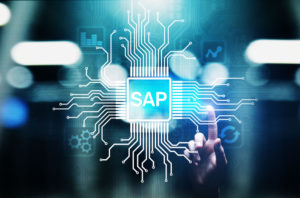
SAP Aims to Simplify Data Analytics in the Cloud

(Wright Studio/Shutterstock)
SAP is no stranger to complexity. German engineers have certain expectations to uphold, after all. But with the latest release of HANA and related analytics services in the cloud, the storied enterprise software firm has taken firm steps to simplify its lineup and reduce the complexity for customers.
With the upcoming release of HANA 2.0 SPS 05, customers who run HANA on-premise will gain the option to simultaneously run their same HANA applications in the cloud in a hybrid manner. This will simplify data management for customers looking to move to the cloud, says Dan Lahl, vice president of product marketing for the SAP business technology platform.
“Customers transitioning to the cloud….can still run their application on premise, and they can spin it up on the cloud. They can be accessing data from both on the cloud and on premise, and that’s transparent to the application,” Lahl tells Datanami. “The whole idea is how do we help customers transition to the cloud. We don’t want to make it hard for them and put up walls.”
The software giant is also making it easier to get started analyzing data in its Data Warehouse Cloud (DWC) and SAP Analytics Cloud (SAC) through prebuilt business content packages. According to Lahl, these pre-built packages bring everything a business needs to get started analyzing data in its data warehouse enviornment, including predeveloped SQL queries and third-party data.
“First we’re delivering retail content, and then we’ll be bringing content for other industries as well,” Lahl says. “The SQL is invisible to the end user. It’s available to the data warehousing experts, of course, because they can change that and modify it as they wish to personalize it to their needs. But the package comes as a set of capabilities and packaged up with SAC, which is our analytics cloud product.”
In the third quarter, SAP will add a new “business layer” function to the DWC that will help customers move data into hosted analytic environments. According to Lahl, the business layer will expose natural language processing (NLP) functionality that provide analysts with an English language-based way to define their data warehousing requirements, thereby eliminating the need to use wizards or data warehousing specialists.
“It’ll be most useful at the outset for freestyle reporting that’s not delivered in the data warehouse or analytics packages. Over time, you’ll see it used more for AI and ML,” Lahl says.
SAC, which is the business reporting and visualization offering, is also getting closer hooks to DWC, which is the logical layer that sits above the physical database layer (HANA) and where analysts perform data normalization work and otherwise prepare the data for analysis. The DWC has its roots in the Business Warehouse product, and is the modern incarnation of that product for SAP’s current HANA era.
Specifically, SAP is eliminating barriers regarding where these two critical components actually reside. “You can provision [DWC] on the same tenant [as SAC] or you can provision across multiple tenants,” Lahl says. “We’re trying to make it much, much easier to be able to run SAP Analytics Cloud on Data Warehouse Cloud.”
And let’s not forget BusinessObjects, the business intelligence and reporting tools that SAP acquired back in 2007 for nearly $7 billion. SAP is creating tighter integration between SAC and the BusinessObjects Business Intelligence 4.3 platform, which was just released last week.
“Just as we had HANA Cloud and HANA on-prem more deeply integrated, same thing between BusinessObjects BI and SAC,” Lahl says. “So now we’re going to help customers transition what they’ve done in BusinessObjects and get that moved to the cloud and share in a hybrid analytics function for the foreseeable future. We’re helping them move their analytics, so we’re not leaving those guys.”
SAP is best known as a provider of enterprise resource planning (ERP) applications, and that’s not changing. But lately it’s been more focused on putting the “P” back into ERP by developing closer links between the transactional apps and the analytics apps, and SAC is the vehicle for that.
“Historically SAP has had a lot of planning product that are disconnected from ERP and from the analytics piece,” says Lahl, who joined SAP through its $6 billion acquisition of the database maker Sybase in 2010. “We’re pulling the planning and predictive functions into SAC. So now you can connect to the ERP capability for predicting what’s going to happen in your supply chain. You can do that through SAC.”
The new planning and predictive functions that SAP is adding to SAC will largely be horizontal in nature, and applicable across industries. It will implement a variety of machine learning algorithms to make forecasts based on historical data. But users won’t need the skiills of a data scientist to use them.
“That’s the design point of the product, “Lahl says. “He’s a line of business user He doesn’t have to be the guy implementing the algorithms, just putting the algorithms to use. He’s just using the slider” or tuning the model with other UX implements like radio knobs, he says.
SAP is also rolling out pre-packaged content for extensions (defined as the personizatio or customization of a business process) and simplifying how it sells integrations (or other services that customers can bring into their SAP environment.
Last but not least (especially if you’re reading this before lunch) is the elimination of SAP’s Chinese menu approach to selecting and integrating products in the SAP Cloud Platform Integration Suite. According to Lahl, under the old approach, the onus fell on the user to pick and choose the SAP parts and components that she would use for the analytics project.
“Now what we’ve done is we have a single package that encompasses comprehensive integration,” Lahl says. “They subscribe to the package and whatever they use, we meter, and that’s what we bill against…It’s going to be much easier for them.”
All of SAP’s primary analytics pieces — HANA, DWC, SAC, – run across all the major cloud providers, including Amazon Web Services, Microsoft Azure, Google Cloud, and Alibaba. It partners with the cloud providers and works with them to ensure its customers have a seamless experience.
But SAP is also in competition with the cloud “hyperscalers,” all of which maintain data lake storage, analytic databases, and machine learning capabilities. According to Lahl, SAP’s ace up its sleeve is its relentless focus on business process and business outcomes, as opposed to nifty tools and tech.
“We think AWS, GCP, and Azure are awesome,” he says. “But they’re much more developer centric, much more of a tooling-based approach. We try to strive for business outcomes. All the things we talked about with prepackaged content in the DW Cloud, SAP Analytics Cloud, integration, extensions – this is all to get the business outcome. It shouldn’t surprise you that’s what we think is important.”
Related Items:
HANA in the Cloud by Christmas, SAP Says
Eyeing Expansion, SAP Pushes HANA to the Cloud































